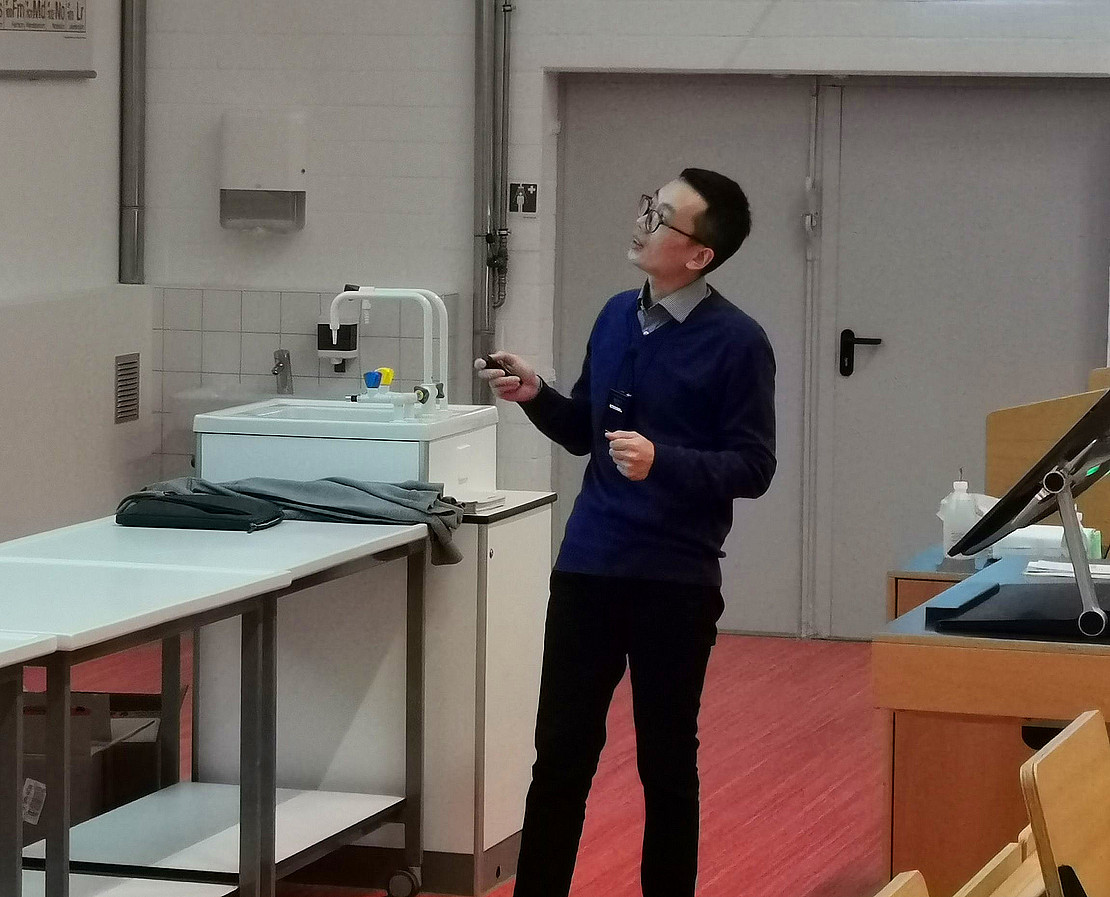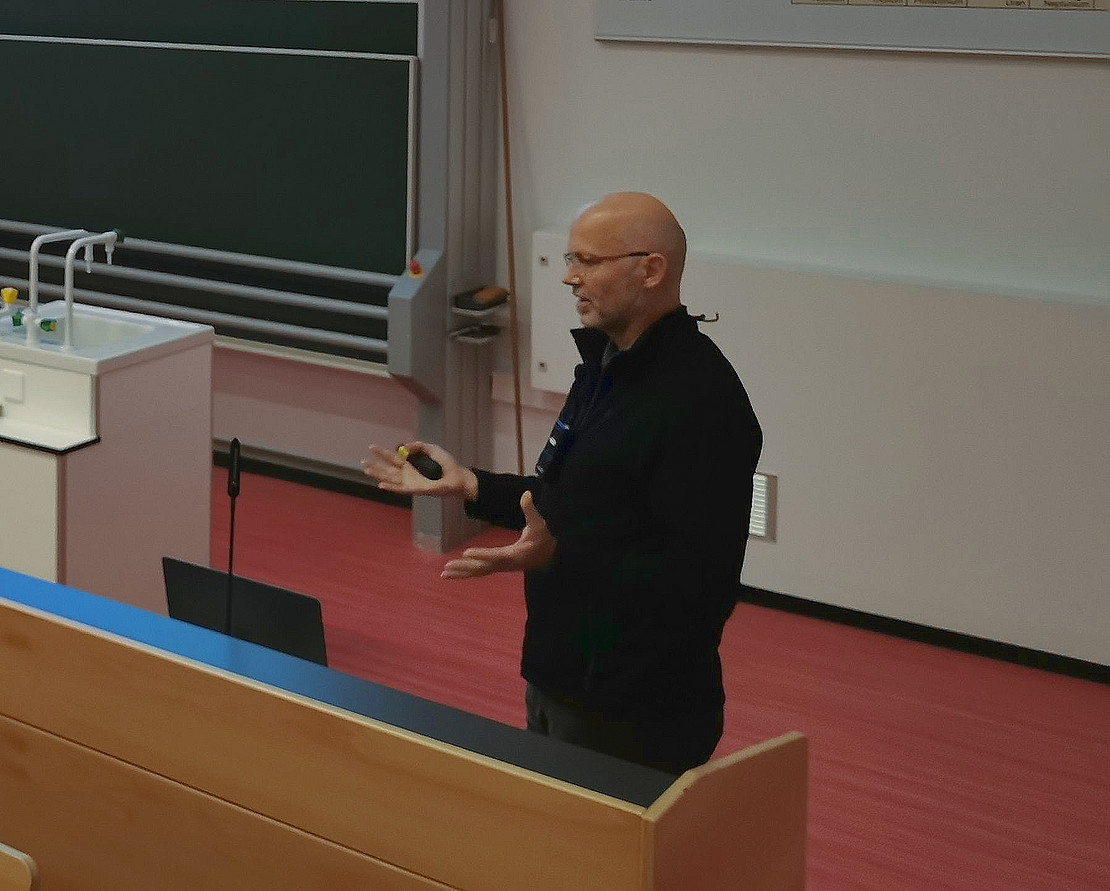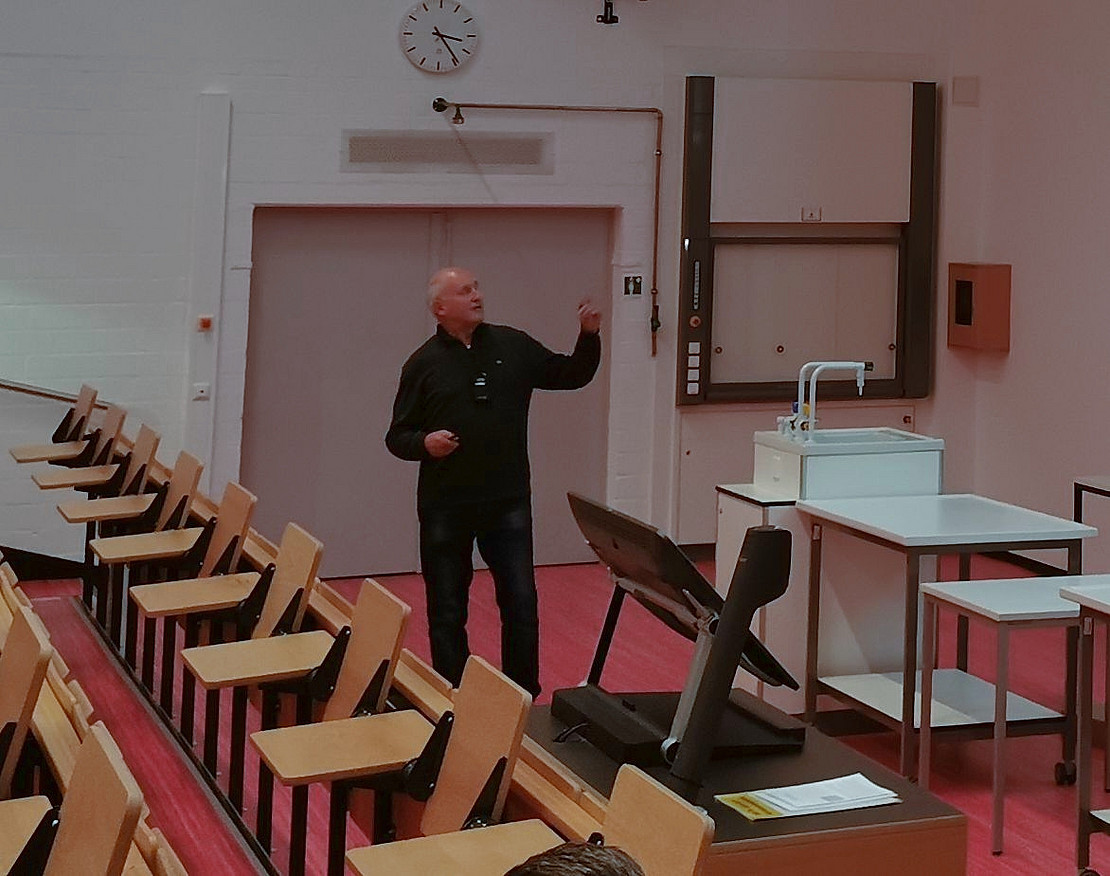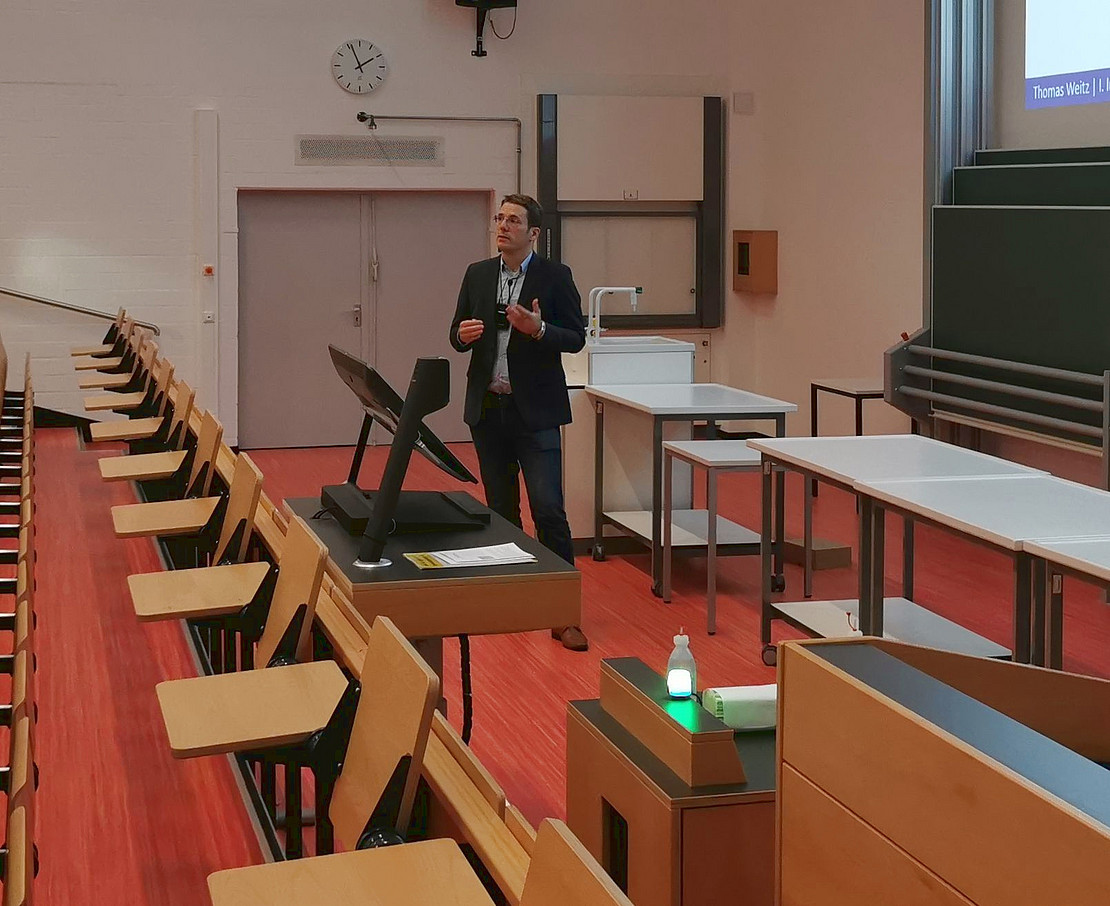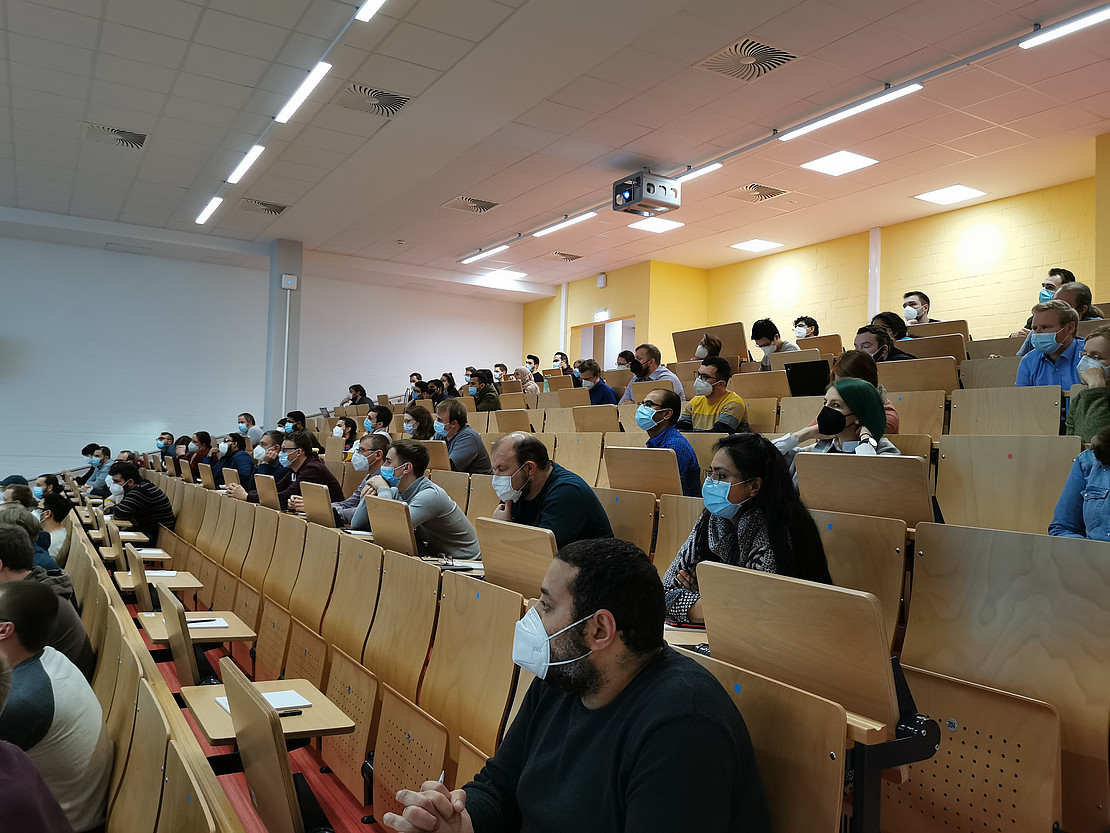CINSaT autumn colloquium 2021
First CINSaT Autumn Colloquium in presence form since 2019 attracts many professors, academic staff, and student to the lecture hall.
On Wednesday, 3rd of November 2021, the annual autumn colloquium of the CINSaT took place in lecture hall 282 at the Campus Heinrich-Plett-Straße of the University of Kassel. Numerous professors, doctoral students, as well as undergraduate and graduate students from various disciplines waited excitedly for the lectures of the speakers. The autumn colloquium, which is open to all who are interested, offers not only the opportunity to listen to interesting topics on current research, but also to inform themselves about the current research contents of the CINSaT during the poster session. After being held in virtual form in 2020, this year’s colloquium was held in presence again. Of course, this required some adjustments to meet the hygiene rules of the University of Kassel. Face masks were mandatory for the whole duration of the colloquium and the whole venue was stretched out in the foyer of the AVZ to accommodate over 100 participants of the event. Only fully vaccinated, recovered, or currently tested persons were allowed to participate, and the contact information were collected.
The colloquium started with a welcome speech of Prof. Dr. Johann Peter Reithmaier, head of the CINSaT, who led into the first part of the lecture series that was opened by Prof. Dr. Thomas Weitz from the University of Göttingen with his talk about “Quantum transport in organic semiconductors and bilayer graphene at the nanoscale”. This interesting talk by our guest was followed by a talk titled “Exploiting light-molecule interaction: From non-linear optics to chiral matter-wave” from Dr. Daqing Wang of the Light-Matter-Interactions Group (Prof. Dr. Kilian Singer), which was also his application presentation for an associated CINSaT membership. After a half-hour coffee break with cookies and cake, which was used not only to get to know each other, but also for the first review of the posters, the second part of the lecture series followed. CINSaT member Prof. Dr. Hartmut Hillmer gave a talk about “Mysterious quantum-optic forces in the nano-cosmos” and afterwards the session was completed with a talk titled “Improved light sheet microscopy and the dynamic quantitative analysis of morphogenetic mechanisms in development biology” given by CINSaT member Prof. Dr. Arno Müller.
The poster session following the lectures showed 52 contributions from the groups of the CINSaT members. The foyer in front of lecture hall 282 offered not only enough space for the numerous poster contributions, but also for extensive scientific discussions and the exchange of information on current research content within the CINSaT. The catering of the Studentenwerk of the University of Kassel provided again for the well-being during the event. The conclusion of the event was the presentation of the 3 poster prizes awarded by this year's jury - consisting of CINSaT members Prof. Dr. Stefan Böhm, Prof. Dr. Philipp Demekhin, Prof. Dr. Friedrich Herberg and Prof. Dr. Rudolf Pietschnig - for the three best poster contributions was awarded (1st prize tablet, 2nd prize Raspberry PI starter kit, 3rd prize external SSD). The jury emphasized the high scientific quality of the posters.
This year, the first price was given to the poster "Deep subwavelength sensing in the THz regime with plasmonic bow-tie antennas on a silicon strip waveguide" by Soenke Grüssing from the Computational Electronics & Photonics Group (acting group leader Prof. Dr. Hartmut Hillmer). The second and third prize were given to Pascal Plettenberg (Condensed Matter Physics and Ultrafast Phenomena Group, Prof. Dr. M. Gacia) with his poster entitled "Machine-Learning interatomic potential for laser excited silicon" and Ly Nguyen (Biophysics Group, Prof. Dr. J. Kleinschmidt) for her presentation about “Interactions of BamD of the Barrel Assembly Machine (BAM) Complex with phospholipid Bilayers and BamA”, respectively. Due to the high number of participants, both in the audience as well as the poster contributions, and the thematically balanced lectures of the speakers, the CINSaT Autumn Colloquium was a success.

